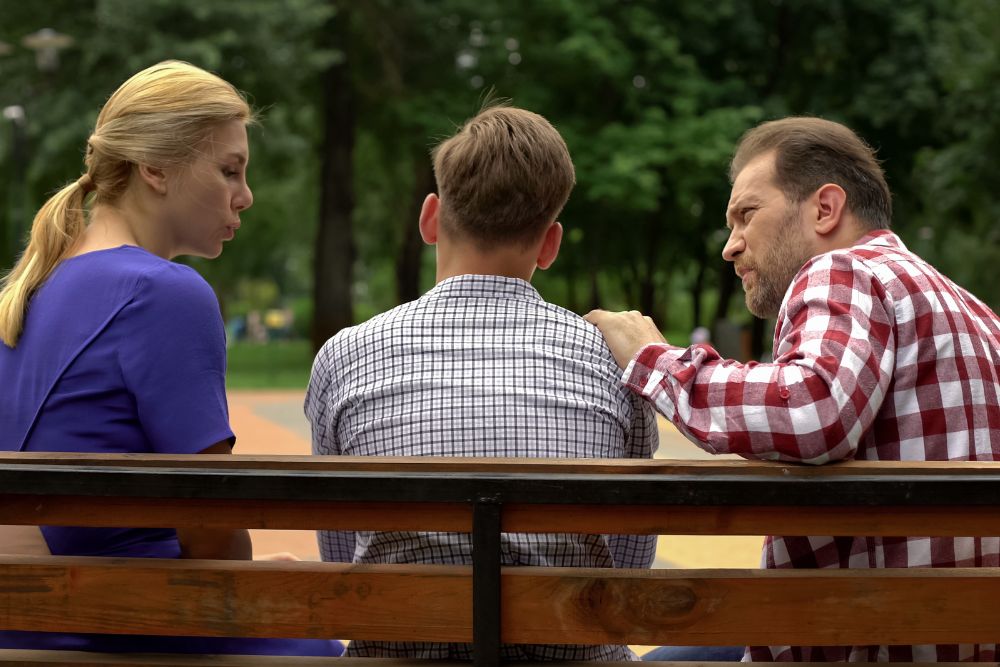Our earliest relationship with a caregiver is a predictor of what our close relationships will look like in adolescence and adulthood. However, it’s not the only influential factor, and our attachment styles aren’t set in stone. Anyone can decide to change their attachment style. It takes both self-reflection and help from others, like a therapist, to develop a secure attachment style, but it can be done.
This article describes anxious attachment style, what happens without treatment, and how to get started on your healing journey.
What’s anxious attachment?
Anxious attachment is one of four attachment styles observed in people of all ages. Attachment theory was first studied by John Bowlby and Mary Ainsworth. They identified three distinct attachment styles that are formed in the first five years of life: secure, anxious and avoidant. Fearful avoidant was added later as a fourth attachment style.
Children with anxious attachments are treated with love by their primary caregiver. However, their affection can be unpredictable and hard to attain. When a parent spends a lot of time away from home, their children may develop an anxious attachment. The primary traits of this attachment style include the expectation and fear of abandonment and emotional dependence on others. Without treatment, these traits can negatively impact a person’s close relationships during adulthood.
Signs of anxious attachment
In her book “Anxiously Attached: Becoming More Secure in Life and Love,” author Jessica Baum writes, “Anxious attachment stems from a deep sense of inner instability where old wounds make people anticipate that they will be abandoned again and again.” Humans have a unique dependence on social connections to ensure safety and survival in our vulnerable first years of life. Deep down, the fears that come with anxious and avoidant attachment styles were formed for our protection.
As we become independent adults, our attachment styles can start to cause problems that ironically keep us alienated from others. Even so, with some education and treatment, we can learn how to develop and maintain strong and secure relationships.
The following feelings and behaviors may indicate that you have an anxious attachment style:
- Depending on reassurance from others — This is also known as low self-esteem. If you don’t have a positive regard for yourself, you’ll rely on external reassurance, affection and approval. You may constantly fish for compliments or become a perfectionist or an overachiever. Many people with anxious attachments feel devastated when a loved one expresses disappointment.
- Intense fear of someone leaving you — Abandonment becomes an intense fear for people with anxious attachments because their brain and nervous system are hyperaware of this possibility. Even after you’ve outgrown your need for a primary caregiver, you’ll still fear that loved ones will leave you.
- Expecting to be abandoned — While you may depend on someone else to feel secure, people with anxious attachments never quite feel comfortable relying on others. You may have a feeling that your time with someone is limited or that you need to perform in a certain way to keep them around.
- Doubting your friends’ and family’s love and affection for you — This is another way of guarding yourself from potential rejection or abandonment. Your mind rationalizes that if you never fully buy into your loved ones’ affection, it won’t hurt as much when they leave. Your relationships weaken because you’re anticipating the worst.
- Emotional outbursts at the thought of rejection or abandonment — Our attachment styles have been hardwired into our psyche since infancy. When someone “touches a nerve” by distancing themselves or expressing that they’re not happy with you, those same pathways in the brain are activated. Your strong emotions can drive you to act on your fears and break down.
What happens when anxious attachment goes untreated?
When a person with an anxious attachment style doesn’t seek treatment, the feelings and behaviors listed above can persist into adulthood. Many young people become overly “clingy” and don’t learn to maintain healthy boundaries or ask for what they need from loved ones. They struggle to develop secure, loving relationships even though they desperately want them.
Anxious attachment style will also affect your self-awareness and your self-esteem. Anxious attachment locks people in a state of trying to convince others that they’re worthy of love. When you rely on this external support to feel OK, you undermine your own ability to judge things for yourself. Your perceptions of yourself and others will be distorted.
How do I heal from anxious attachment?
A passage from Jessica Baum’s book reads, “All your feelings need to know they matter, all our feelings need to be heard, and all our feelings have a right to be acknowledged.” You deserve to be loved just as you are. It’s good to have a support system that includes different types of relationships, like a therapist, friends and mentors. Developing self-respect and holding your boundaries are important ways to maintain good relationships with others.
You don’t have to depend on another person for your emotional security. The greatest attachment healing happens when you learn to reflect on your feelings and self-validate. That’s a goal that can take years to work on, but it’s possible. And you deserve companionship and compassion from others along the way.
Have questions about attachment theory or anxious attachment? At Embrace U, we help our patients reflect on their relationship patterns and change them with evidence-based therapies. Contact our team today. We’re here to listen.




